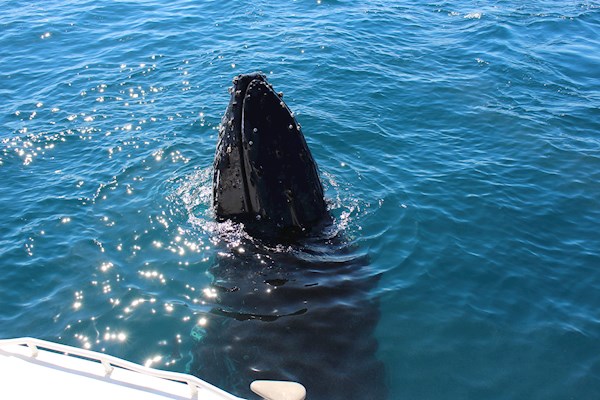Humpback Whales
The Humpback Whale is probably the most well known whale in Australia due to its annual migrations that take it close to both the east and west coasts of Australia.
Humpback Whales average around 12-14 metres in length, starting around 4 metres long when born. Some of the largest Humpback Whales recorded measured almost 16 metres in length. A 12 metre Humpback would weigh roughly 40 tonnes (40,000kgs).
Because Humpback Whales are mammals the skin is quite smooth (no scales), breathe air, have warm-blood and feed their young milk for about a year. They are covered in a thick layer of blubber to help insulate the body warmth from the Antarctic colds.
Humpback Migration
The Antarctic is the main home of the Humpback Whales but due to the annual winter migration, the whales can be seen up along the Queensland coast. The Humpbacks spend the summer months feeding in the southern waters, and then migrate north during the winter to breed in warmer waters.
Common Whale Behaviours

Spyhopping
Spyhopping is an inquisitive behaviour in which the whale brings its head straight up out of the water to have a good look around. They can see quite well above as well as below the water. The head of a humpback whale is also covered in golf ball sized lumps called tubercles. The exact function of these tubercles is not well understood but we know they have a single hair follicle in each tubercle and more than likely these are sensory hairs, kind of like the whiskers of a cat. This means they can probably use them to feel things like water temperature or water pressure. When spyhopping they can also probably feel wind speed or air temperature.
Tail slap
A tail slap occurs when the whale extends its tail fluke above the water and slaps it, often forcibly, onto the surface of the water; it is quite common for this behaviour to happen multiple times in a row.
Head lunge
A head lunge occurs when a whale lunges forward, with most of its head exposed out of the water. This particular behaviour is commonly seen in surface-active groups were male escorts and challengers are vying for a close position to a female.
Spouting
Spouting is the most common behaviour people observe when Whale Watching. This burst of vapour is just the whale breathing, and is caused by hot moisture-laden air being exhaled from the lungs into the cooler air. The vapour hangs for a moment in the air before dissolving.
Pectoral Slap
This behaviour occurs when Humpback Whales swim on their side and repeatedly slap the surface of the water, making a loud splash. It is believed to be a form of communication and may be used to attract attention.
Breach
Breaching occurs when the whale leaps out of the water. There are a range of theories as to why whales breach, but ultimately the reasons are unknown. Theories include non-verbal communication and simple playing, particular for whale calves.
Logging
Like the name suggests, Logging is a behaviour whales exhibit when resting and resemble logs floating on the surface. Logging is common in right whales, sperm whales and humpback whales.